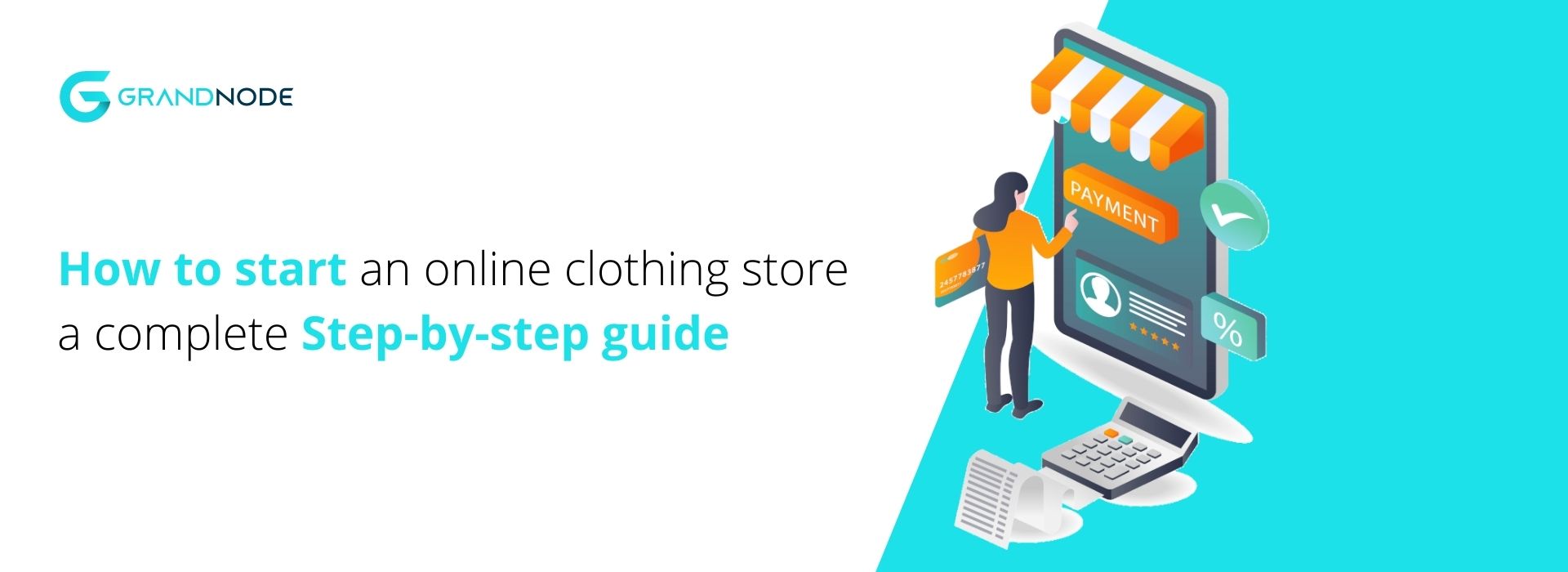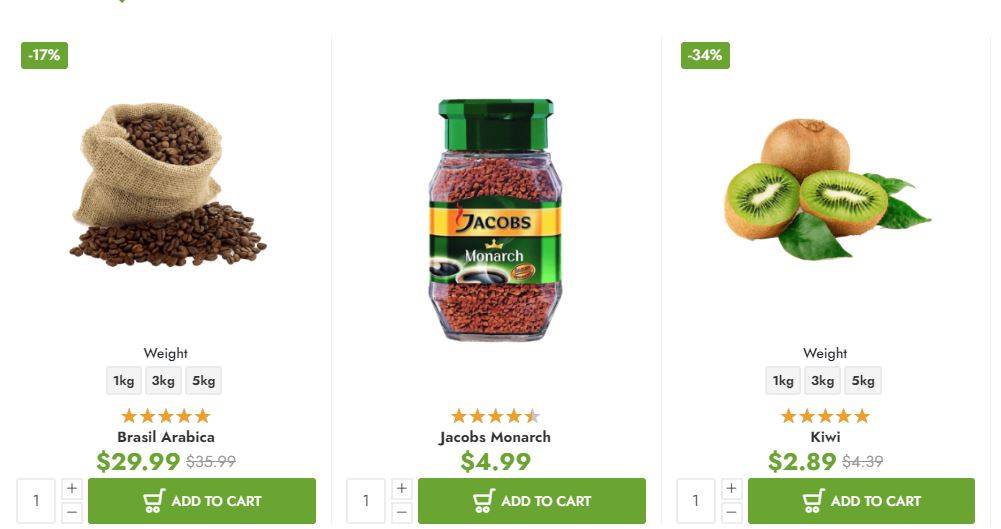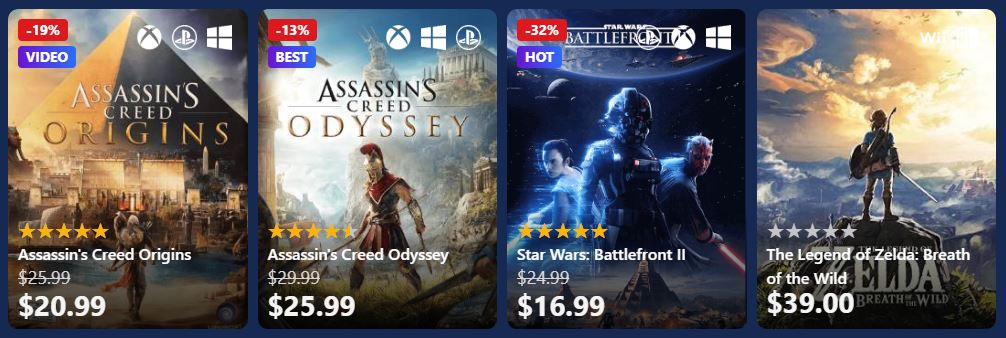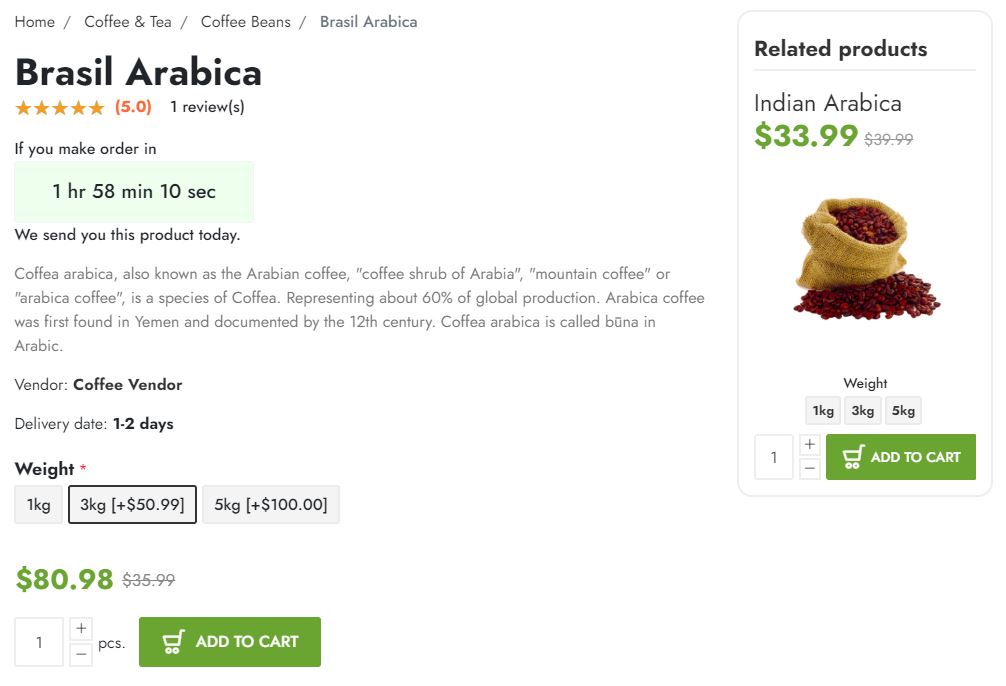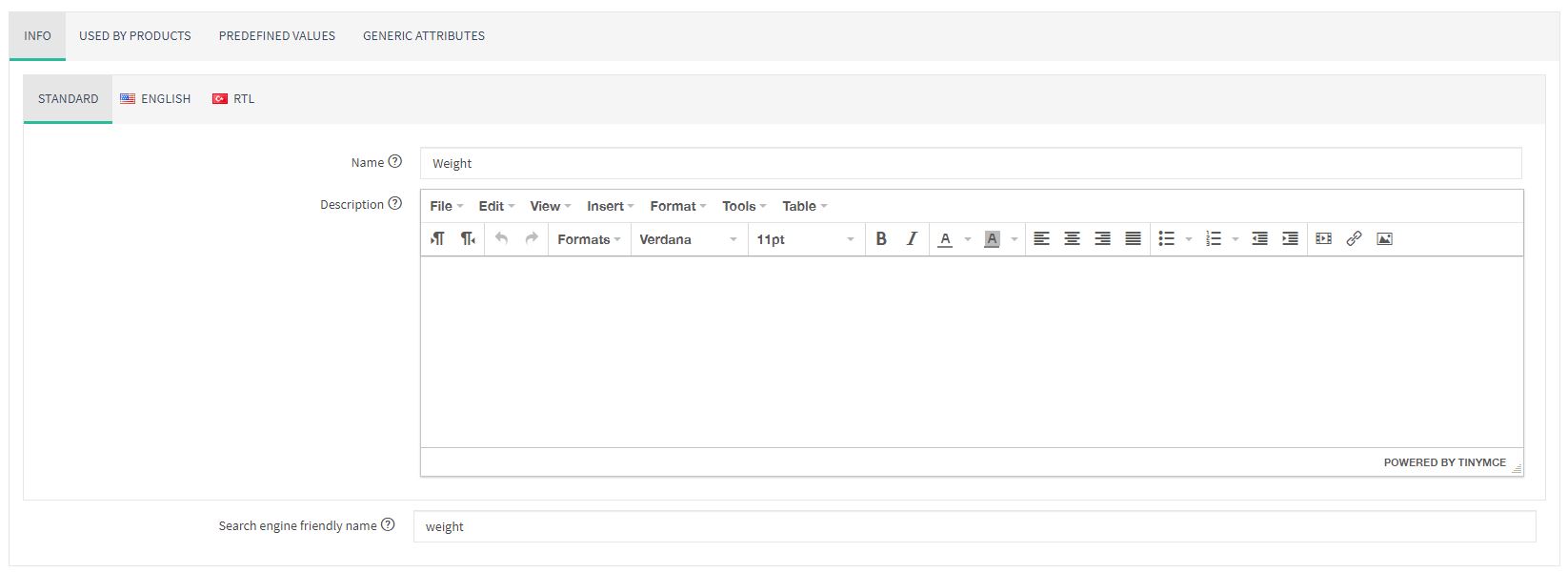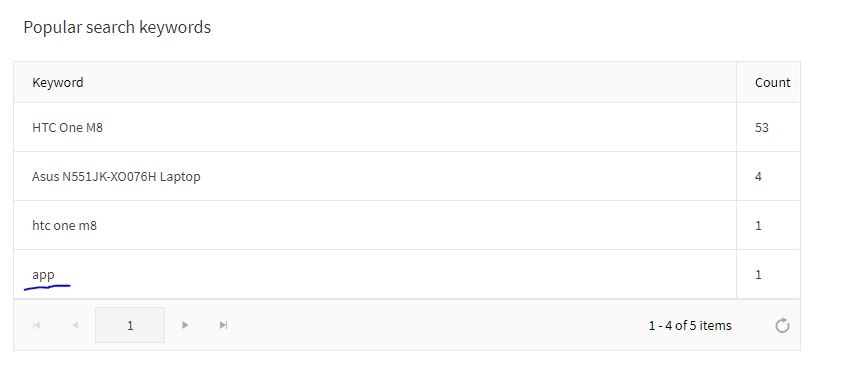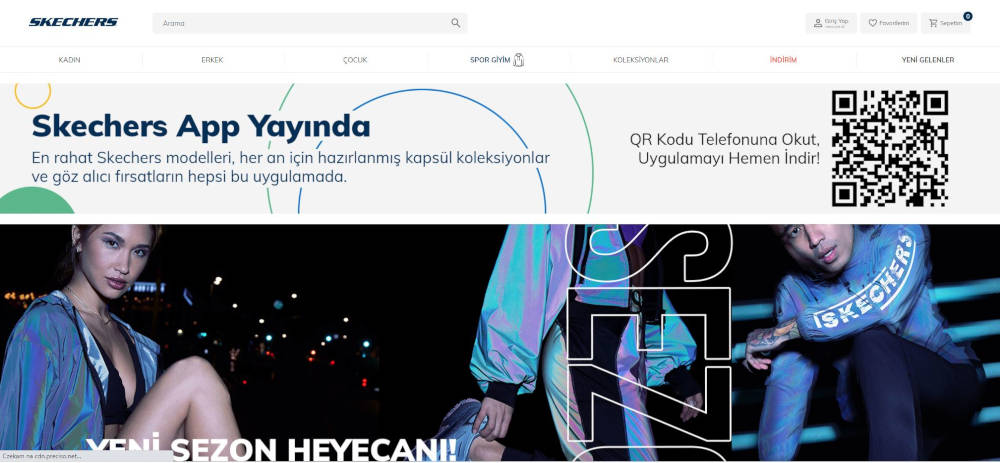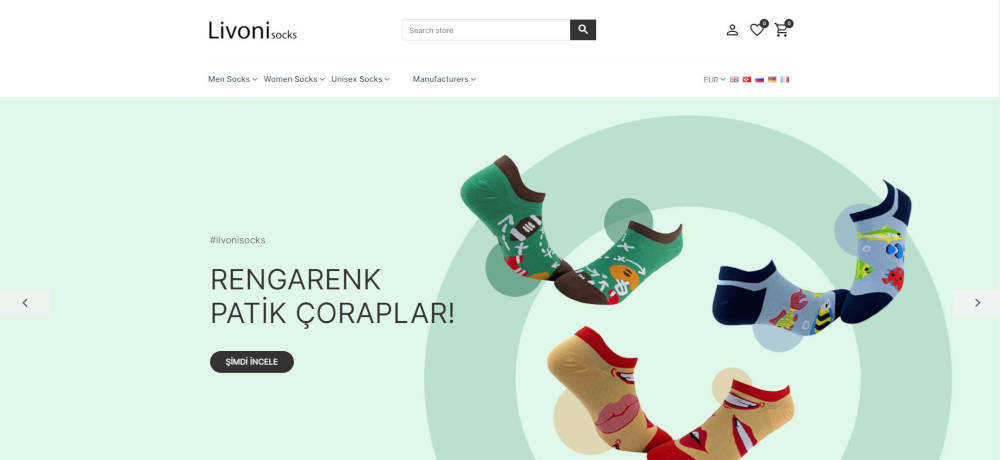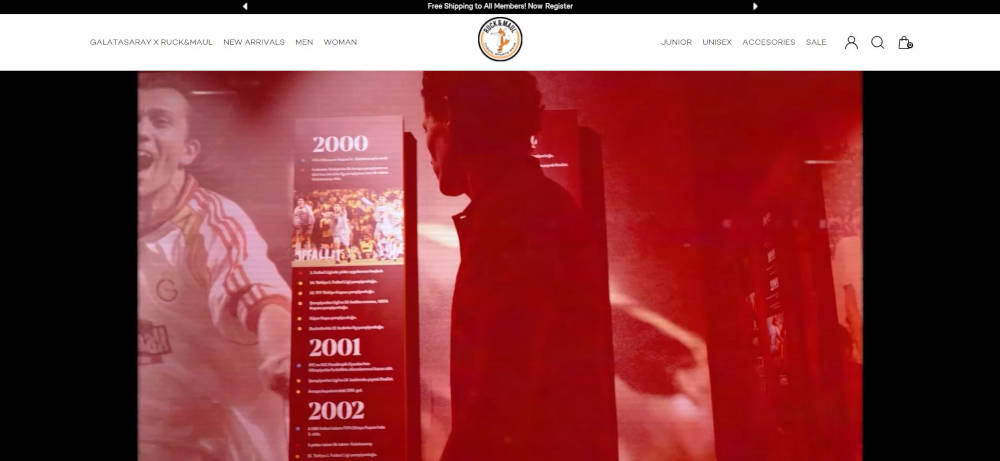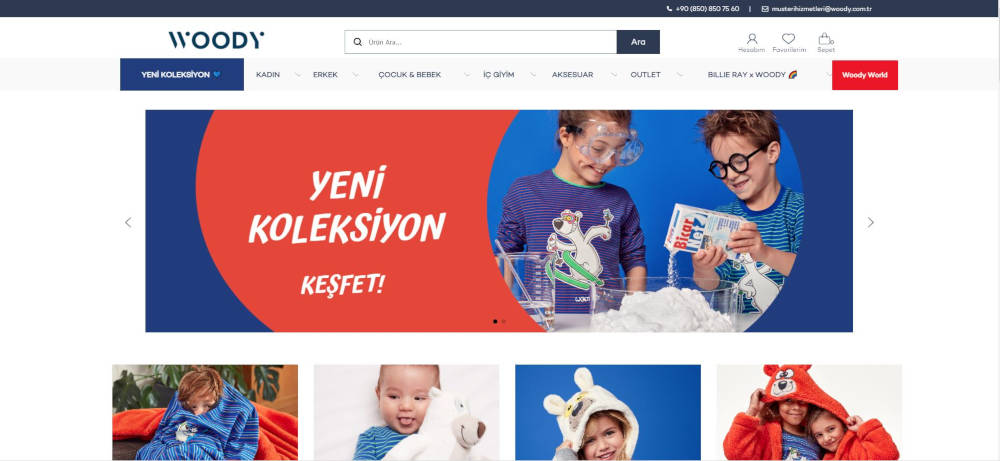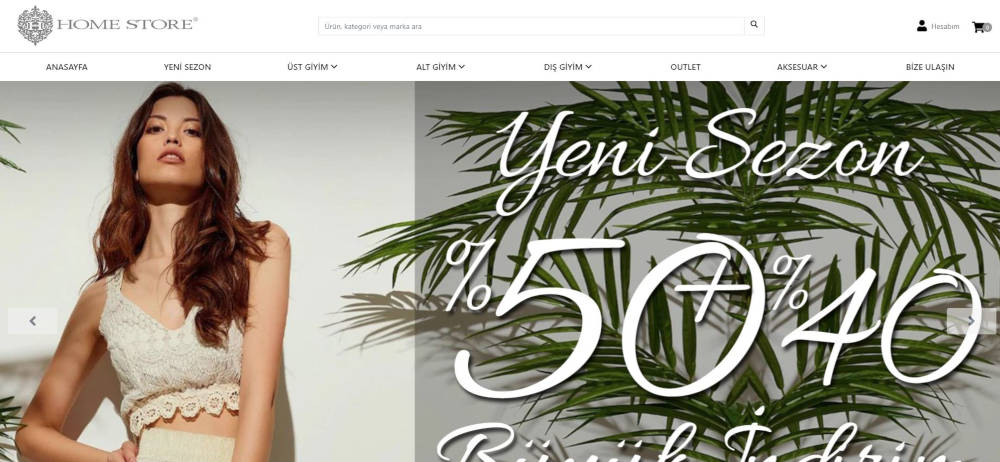If you read this article, it means that you are wondering how to start an online clothing store. But you need to know that even if you decided to open it, there is a long way to a successful online clothing store. As eCommerce experts, we are here to provide you with the best tips to avoid mistakes and take as many benefits as it's possible. Your journey starts with the business analysis, preparing your perfect online clothing store business model, finally on creating a product database. If you want to maximize your income, let's check how the competitors and the biggest brands are doing their businesses and make your own perfect online clothing store.
- Online Clothing Store is a must-have for every offline store clothing business, not just the opportunity.
- Decide which business model is perfect for you: i.e Custom Cut & Sew, Standard Online Clothing Store, Dropshipping, Second-Hand Online Store.
- Before opening an online store think about a niche, analyze your competitors, analyze the eCommerce platforms opportunities, then start the business.
- Use the battle-tested good practices to empower your online clothing store.
This article is a great extension of our previous 10 standards that your eCommerce needs for growth and sustainability which we published a few months ago on our website.
List of content
- 1. Selling online vs offline
- 2. Steps for how to open an online clothing store
- Choosing a clothing niche
- Think about a business plan
- Choosing eCommerce platform
- Preparing products database & store content
- 3. Best practices for online clothing store
- Wide range of available payment methods
- Logical categorization
- Advanced filtering, Friendly URLs, and Product Attributes
- Highlight customer reviews
- Advanced search engine
- Mobile apps
- Push notifications
- Clear return policy, Free shipping & wide range of shipping methods
- Sizing
- Managing products and variants
Selling clothes Offline vs. Online
Until recently, buying clothes was associated with a day-long journey through a shopping mall. Visiting every store and spending the whole bottom searching for the perfect product. Is this the only correct solution? We have been trying to answer this question for a long time. We support both offline and online stores. But is there a perfect recipe for success? There is no doubt that the pandemic has shown that even the biggest players in the industry are walking on thin ice. The closure of the gallery, the lack of offline sales, effectively slowed down the development, and in the worst-case led to the loss of business.
Was it possible to avoid it? It is not yesterday that we are talking about the power of e-commerce. Companies that decided to use the omnichannel strategy early experienced these losses the least. Customers who previously bought offline have been forced to direct their steps towards e-commerce. And many of these people, despite restoring the possibility of buying products offline through sales channels, will not come back to them anymore and will stay with the benefits offered by e-commerce.
Finally, if you think about a new online clothing store you need to know that the entry barrier is much lower in the case of e-commerce. As statistics show initial startup boutique average cost is 48,000$. Where you can open your online store much cheaper and faster.
Furthermore, your store is opened 24/7, without timetables like in the typical shopping mall. Even if you missed the best time for opening an online clothing store, which was 15 years ago, when the current leaders started to establish their image as a leader, still you are able to be successful. Nowadays, this industry is still evolving and growing.
Over 200$ billion eCommerce revenue in 2024 is an opportunity for you. Don’t let it pass you by.
Steps for how to open an online clothing store
Let’s assume that you’re after first research and it’s time to make a clear plan. We can’t achieve success if we don’t make proper plans, steps and we don’t find a way to make a rocket launch.
- Choose a clothing niche
- Think about a business plan
- Choose your eCommerce platform
- Prepare your products
- Publish your store and start the journey
Choosing a clothing niche
If you are not a manufacturer, you will face a problem, that you will be „another online clothing store”. With the same products in all other stores. That’s why is so important to find an empty niche, that you will be able to fulfill. Even if it’s a huge industry, there is a lot of missing things, that customers would like to purchase, but they don’t have a place to do it.
Be real – don’t act like you are passionate, be him. You won’t be successful if you don’t like the things that you sell. Only real passion and hobbyist will make a difference and make a success in eCommerce.
Be an expert – create your image as an authority in the industry. Think about additional content, unique values for your store. Even if products are similar,
Be unique – your store has to be unique. Only in the U.S, there are over 2.1 million online retail stores (https://digitalintheround.com/how-many-online-stores-are-there/). If you jump into the industry with the same offer, it’s impossible to make a success.
Think about a business plan
It’s time to think about a business plan. Your goal without a path is only a dream. It’s a business, you put in it your own money, time and other resources.
- analyze your competitors
- analyze your strengths
- analyze your weaknesses – make sure that you are aware of your weaknesses and find a way how to turn them
- analyze the market
Finally, you need to think about the business model. There is a lot of potential ways how you can operate in your online clothing store. Selling clothing can be done in a few different models. You have to make a complete analysis and choose the right one, which will give you the possibility to make money without draining your finances. The most popular choices are:
- Print on demand - is a process for creating products with a no-waste approach in mind. Instead of manufacturing thousands of products, you create a product when it’s ordered by the customer in your store. In that case, inventory is thing of the past and it’s not a challenge anymore.
- Custom cut & sew – it’s a way when you order clothes from cut & sew manufacturers, make your custom line and sell it in your eCommerce.
- Standard online clothing store – It’s a typical online store with a lot of products that are available right after purchase, you process orders immediately and manage stock quantities in ERP systems.
- Dropshipping – it’s one of the methods, that is recommended for young and beginner entrepreneurs, you don’t have to pay for inventory, you just make the marketing, promotions and sell products, after that, the order is forwarded to the wholesaler and they process the order and send it to customer.
- Second-Hand Online store - How to start a second-hand shop online? Well, in the same way how you start the typical online store, but second-hand store requires additional features, like the possibility to upload products by your customers. It’s easily achievable with the Marketplace plugin for GrandNode.
Choosing eCommerce platform
If you want to create a successful online clothing store, it will be impossible to make it without an eCommerce platform. There are a lot of various features that make the eCommerce platform the best.
Long story short – you won’t find the best eCommerce platform ever, you will find the best eCommerce platform for you.
Our industry is full of comprehensive, more or less advanced eCommerce platforms. You can check the best open-source eCommerce platforms (https://grandnode.com/the-best-open-source-e-commerce-web-applications) in many comparisons. But, the sad news is that before choosing the eCommerce platform for an online clothing store, you will need to analyze them and you should make choice based on several factors.
So, what we should do to choose the best eCommerce platform for us (https://grandnode.com/how-to-choose-the-best-e-commerce-platform)?
Well, let’s clarify few things:
- General – Think about the general features of the store. Look at the out-of-the-box available features. The more you find, the less you will have to develop. So the development process will be much shorter.
- Technical knowledge – Think about further improvements. Do you have the knowledge to provide changes by yourself, or maybe you would need to hire developers or an agency? If yes, look at the potential costs of hiring and features implementation.
- Integration possibilities – During this time, you will need to integrate the store with third-party software like ERP, OMS, WMS. It’s worth checking if eCommerce Platform gives you API access out of the box. The best, if you can extend the API according to your needs.
- eCommerce platform type – Open Source or SaaS? It’s time to decide if you want to make an online store and become an owner of it, or do you want to pay for it monthly as a subscription.
It’s worth writing down your requirements, reach the sales team of every platform and get feedback from them. After that, you will be able to make a full analysis and decide which platform will be the best for you.
If you want, drop us a line about your project, we will find a perfect solution for you.
Preparing products database & store content
Now it’s time to think about the content. Content in the online store is a key to your success. It’s very simple, without good quality content, you won’t be able to make a success in eCommerce. Especially during the times, where you won’t be alone in the market. Which parts of the store and what types of content interest us the most?
- Product descriptions
- Category descriptions
- Blog posts
Product descriptions
Starting from the beginning and the most important part of the store. You have to write unique, high-quality product descriptions. If you fail here, you won’t be able to rank in the search engines. Furthermore, you won’t appear in the search engine results.
Product descriptions have another vital role in the online clothing store. They are used to paint a picture of a product in the customers’ eyes.
One study found that 20% of purchases fail, because of missing or unclear product descriptions (https://www.nngroup.com/reports/ecommerce-user-experience/).
Product pictures
Product pictures in the online clothing store are used to provide the most important and expected information about the product to your online customers.
How to do it well? Clothing should be photographed at least on mannequins. If you have the possibility to take a picture when a model wears your clothes, go for it. It’s the best choice in the online clothing store.
If we can’t try the clothes, we need to ensure that it’s that one that we would like to wear. In that case, the best is a model wearing our clothes, with details about height and used size.
Category descriptions
It’s a great weapon in the SEO specialist's hands. Usually, it’s used to improve your in-store SEO. Prepare a category description with keywords related to your category. You will for sure rank higher if you do that, but you have to be unique and creative.
Best practices for online clothing store
Wide range of available payment methods
Nowadays we have almost unlimited possibilities if we talk about payment methods that can be used in online stores. We are no longer limited only to PayPal or another main payment gateway.
12% of online store users canceled their last purchase because they weren’t able to pay with their preferred payment method.
GrandNode offers a huge variety of payment methods. Starting from the most popular like PayPal, PayU, Klarna, Stripe, Skrill, G2A.
Logical categorization
Imagine that you jump into the Zalando website and boom, everything they have is on a single landing page. Is it possible to make a purchase in this store?
Indeed, it isn’t.
If you look at every main player of the fashion industry, you will see one, common pattern that is used in every single fashion store managed by the biggest brands.
Logical categorization.
We don’t want to browse for clothes or shoes and dig deeper and deeper to find the matching product. We expect an intuitive path to our destination.
Let’s look at the biggest fashion eCommerce, Zalando:

If you look at the Men/Women category, you will see a clear tree of categories. T-shirts, Shoes, Accessories, etc. If you look at the kids category, you will see much more. You will have also stuff categorized by size (age). It will ease up the browsing process for those who don’t buy this stuff very often and need additional clues to find the desired product.
If you don’t have kids, it’s much easier to find something useful for a gift, if you know only the age of the kid.
4F?
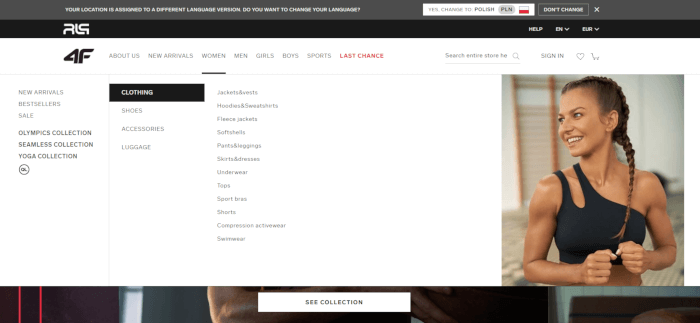
The same, clear navigation, that allows you to act fast.
eFootwear
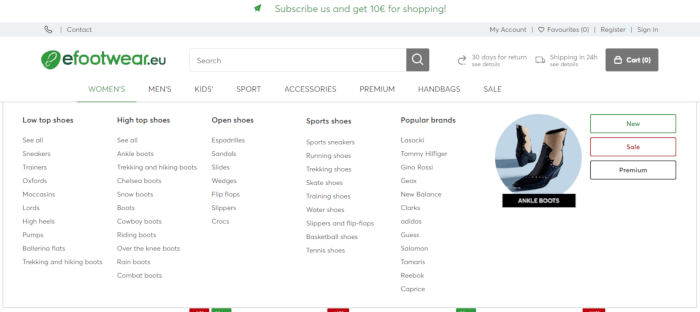
As you can see on eFootwear store, you will see a clear categorization. Every type of shoe is in a different category, so if you want to purchase sneakers, you won’t be forced to dig through the high heels.
Simple, but not always is so obvious.
CCC is another example of clean, logical navigation.

Behind the logical categorization, we can find a related term that is crucial in every e-commerce store.
eCommerce Navigation.
Your navigation has to minimize clicks on your website. This is the key sentence in eCommerce, independently from the industry.
Advanced filtering, Friendly URLs, and Product Attributes
Minimize the number of clicks that are required to find your desired offer. Filtering is one of the most important parts of the clothing store.
I would say, that it’s the vital part of every eCommerce that aspires to grow and sell. Ecommerce filters and faceted navigation help you break down long walls of products into friendly to manage results. If you implement them properly, your customers will be glad.
And it will result in higher conversion.
If you have over 100 products in the category, you can’t expect that customers will dig through them to find a black coat. You have to bring it easily to his eyes. Just provide necessary filters, it would be great if it will be Ajax Filter, which will reload results without refreshing the whole page. If you want, the Ajax Filters plugin does it very well.
As you can see on the 4F example, instead of analyzing 255 products, I was able to easily filter it by Insulation and receive 3 interesting products.
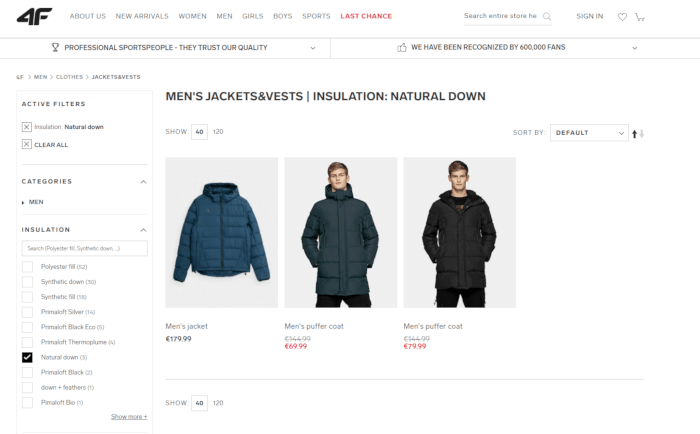
In the same time look how it’s done in Skechers.com.tr:
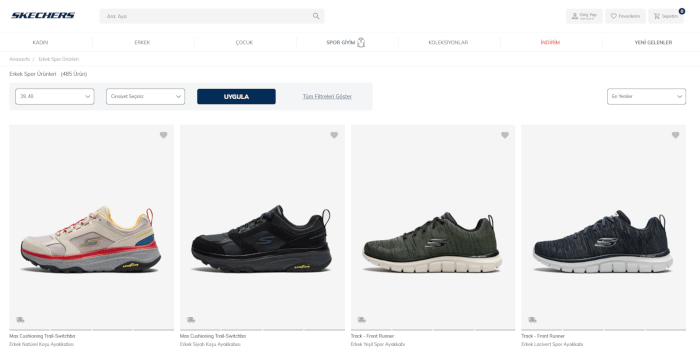
Ajax-based filters reload a list of products immediately after user choice.
Remember that even filters have to be developed correctly. We don’t recommend implementing them site-wide, where you will have the same filters on every category.
If you use the Ajax Filters plugin, you shouldn’t be afraid because by default we limit filters to a particular category.

In online clothing stores, attributes are a vital part of eCommerce. You will use them to allow users to select sizes or colors. In other examples maybe you will use them to customize the product and select the correct variant.
Possibility to filter products, share the URL of products, and do that on each possible page like Category page, Manufacturer, Vendor, or Search.
So now, no more complicated GUIDs or ids in filtering URLs.
Many eCommerce platforms use the following pattern to handle URLs:
https://demo.grandnode.com/computers?specs=5e3d3055f9274c0b8c76f2e3,5e3d3055f9274c0b8c76f2e8
This means - Category = computers, specification attributes: CPU Type: Intel Core i5 and Memory:16 GB. But in practice, it doesn't give a good experience for users.
What we can see in GrandNode now? Let's look:
https://demo.grandnode.com/computers?cpu-type=intel-core-i5&memory=16-gb
And it's obvious what it means and it brings only the best user experience! :)
To use that feature, you need to be sure that specification attributes are allowed to filtering. Then, you need to be sure that you've configured the search engine-friendly name for specification attributes, during their creation.
Product Attributes
If you want to bring only the best user experience to your users. It's also recommended to use our hidden feature - product attributes visible on catalog (category, manufacturer) pages. What does it mean? Let's look at our newest themes. On the product boxes, you are able to show all product variants possible to purchase.
By default, you won't be able to do anything with it. However, with a little HTML, JS magic, you will be able to make them active and mark the desired variant on the product page. Again example from our demo:
http://food.themes.grandnode.com/arabica-coffee-beans?weight=3kg
If your friend clicks on that link, he will be redirected to the product page with the already chosen 3kg package.
You need to know that you need to make some things before you will be able to see that effect. First of all, your product attributes must have the "Show on catalog pages" checkbox marked. As on the screenshot below:
During the product attribute creation, you need to check if it has the search engine-friendly name filled in properly.
Please note that without a filled Search Engine Friendly Name, you won't be able to use that functionality.
Highlight customer reviews
Let’s start with the basic question. Will you trust a company that has only superb, positive reviews?
Of course not.
I suppose you will treat them as a fake review made at the company's request. In a well-balanced reviews policy, the case is not in receiving only positive feedback. The most important thing is how you deal with the negative ones.
It’s also a fact, that unhappy customers are more likely to write reviews than a happy customers. You need to have a clear response strategy, which will be applicable in every type of review.
It’s also worth noticing that a negative review is an opportunity, not a problem. If you will try to help an unhappy customer, there is a huge chance that he will change his mind and make a purchase or change a review/write a new one. A lot of feedback comes from a lack of information, try to ask for additional feedback, try to solve the problem.
So, if we know how we should react to reviews. Now let’s cover the review's appearance and highlighting.
Zalando as one of the best examples of fashion online stores also provides reviews.

On the Zalando website, you will find sorting based on the date and helpfulness. If the review is helpful for other users, it will be visible higher. Even, if it's not positive, as, in the example above, it's very useful for customers, it may result in choosing different products instead of further returns and customers angry.
Advanced search engine
Implement as advanced search engine as it's possible. Customers do not always know what to type in the search box to find that what they are looking for. The best choice is to implement an Elastic Search Engine that will ignore typos and will bring correct results even if they are not provided correctly in the search box.
As proof, look at the Zalando marketplace. I wanted to purchase a Tommy Hilfiger product, however, I provided the wrong term in the search box, because I search for "Hilfinger". Zalando ignores it and provide me with exactly that what I was looking for.

You need to know GrandNode has one of the most advanced search engines available out of the box. Even, the most simple way of search - a typical search may be extended with default GrandNode settings.
First of all, in GrandNode you can search for Products, Manufacturers, Categories, and Blog Posts. Searching in a blog post can be enabled in settings.
The second interesting option is to define, how many letters customers should enter to trigger the autocomplete. By default, it's 3 characters, but you can change it as you want. To perform that, just navigate to Settings -> Catalog Settings -> Search tab.
Furthermore, you can extend the typical search engine and force it to search also in SKU or Description. So you if you have the part number in the automotive store, just insert it to the SKU field and allow your customers to easily find it.
You can also enable auto-saving the popular search keywords in settings.
So, when I enabled this setting, then enter the "app" into the search bar, in Admin panel -> Dashboards -> Statistics you will see the following info:
Mobile app
Have you ever thought about why it's worth having a mobile app? It's time to break away from the boring online stores with pseudo mobile, responsive pages. In the case of mobile apps and e-commerce solutions, you can definitely rule on us.
All products, categories, manufacturers, customers are synced with the website data. What does it mean for you? You don’t need a different admin panel, just only one GrandNode installation and that’s all.
Why do developers and agencies love our Xamarin mobile app?
Rapid development - gives the possibility to react quickly to markets changes
Cost savings - a custom app costs over $ 20,000, we give it 10x cheaper
Native UI/UX - app matched to the platform conventions
Better testing - automating the testing process thanks to C#
API integration - unlimited application development thanks to source code package
If you look at the biggest brands in the industry, you will see that almost everyone has a mobile app.
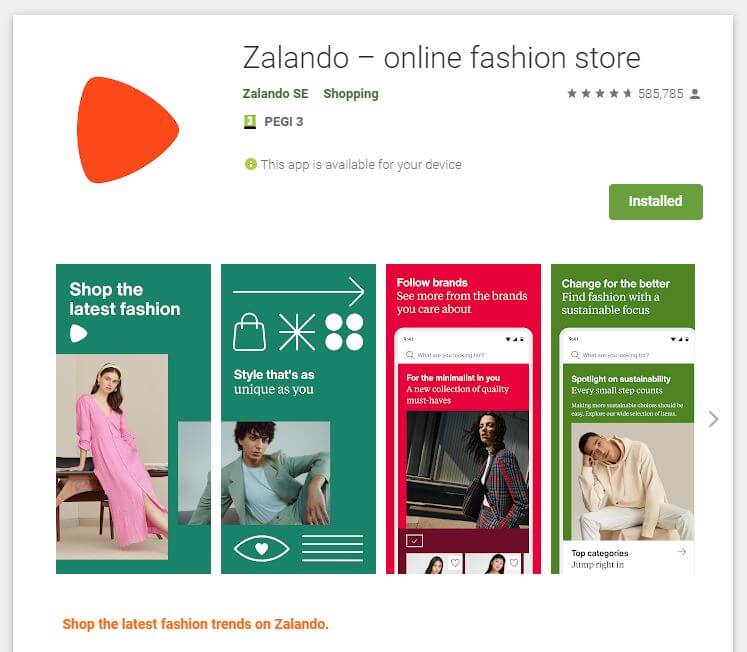
In the case of Zalando, it's great to look at the number of app reviews. Note that not every customer leaves a review, so the number of users is enormous!
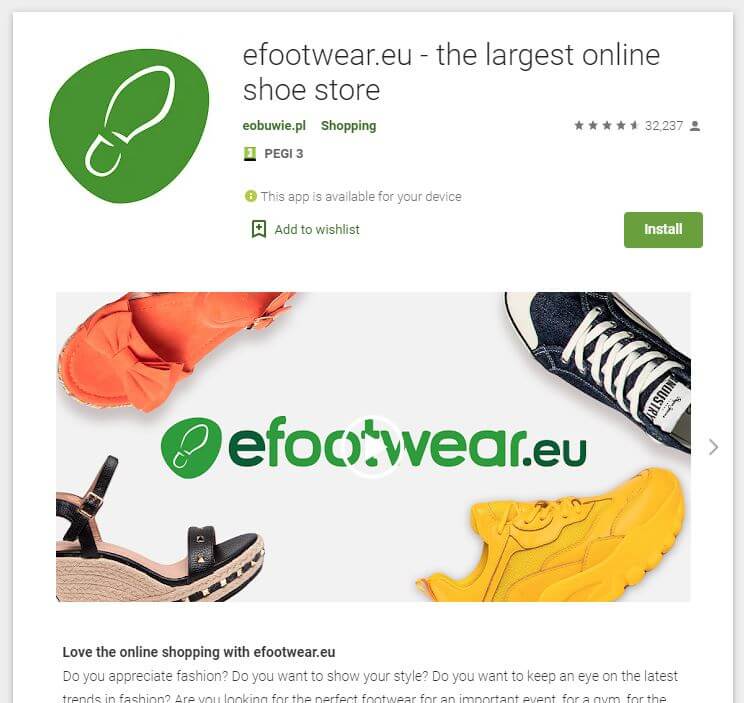
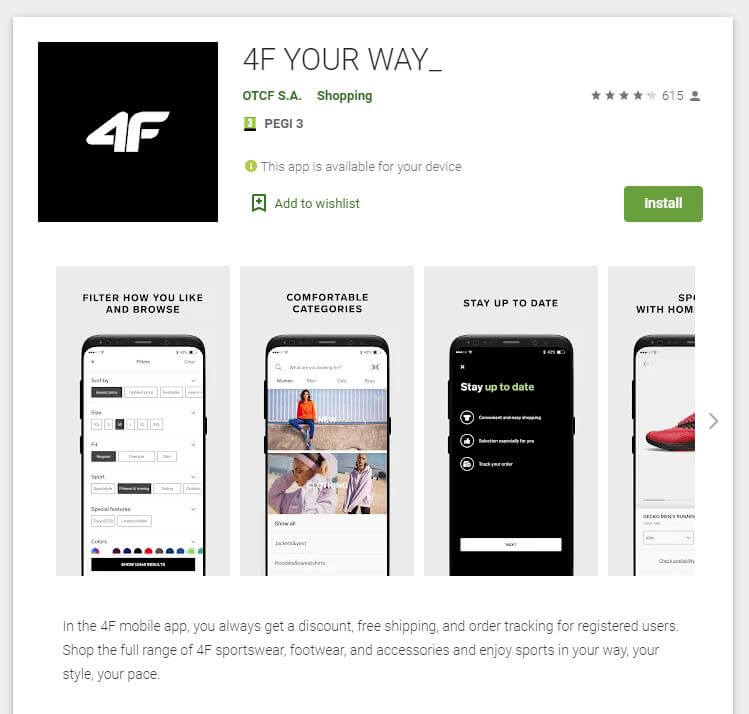
If you want to learn more about GrandNode iOS/Android mobile app, drop us a line or jump directly into the mobile app product page.
Push notifications
Push notifications give you the possibility to engage customers immediately when you want to. Users always have their phones in their hands, so they will be able to react quickly.
Configure the push notifications to inform customers about all important events, things related to your store.
Do you get information that deliveries may be postponed or delayed? Drop a line to your users. They will appreciate that fact.
Maybe you want to run a promo or engage them to use a specific way of delivery? Drop a line too.
If you don’t how to configure push notifications, navigate to our docs. In this article, you will get all the necessary knowledge about Firebase Push Notifications implemented in GrandNode. That system is available out of the box without the need to purchasing and developing a push notification plugin.
Clear return policy, Free shipping & wide range of shipping methods
Online shopping, especially for clothes, can bring you many surprises. Even when you go to a brick-and-mortar store, you may notice that one size is not always the same, one size is different, the shape is different in another. Not all sizes will fit. While this is not a problem in the case of a stationary store, we will not approach the checkout online and exchange for another one. We need to make a return, ship the package. This is not a problem these days, but it must be clearly described. Zalando is definitely the leader in this topic. Within one week, I am able to buy clothes, return them, order and pick up the next ones. Without leaving home.
There are no better ones in this case. Go ahead, be like Zalando.
If you look at other big brands, like eFootwear store. They clearly show information about 30 days return.

Sizing
This chapter is strongly connected with the previous one. As we can’t go to the dressing room and try on clothes, we must rely on the most accurate data provided by the store. If your competition doesn't do it, do it for you, customers will appreciate it immediately.
How to do that?
Well, provide as many dimensions as possible. Of course, depends on the product standards.
You can attach them to the product as a downloadable size sheet, or as a built-in on-site element.
As Zalando example shows you can implement a simple product tab with the most important information of the product. How? Specification attributes for example will be perfect for that. Furthermore, you will be able to make them filterable.

Managing products and variants
Product variants management is always a pain in the neck of every business. How to deal with products, that have different stocks for color/size combination? Of course, we can use the stock inventory management by product attributes and make a lot of combinations of sizes/colors. But we may use something, what is regularly used be the biggest.
If you jump into details of Zalando. You will see, that even if they provide sizes/colors, as a similar-looking attribute, they are not attributes. They are individual products, so we need to handle only sizes as an attribute. It eases up the whole management process. Because it’s much easier to manage stocks with one attribute, than a whole group of combined attributes.
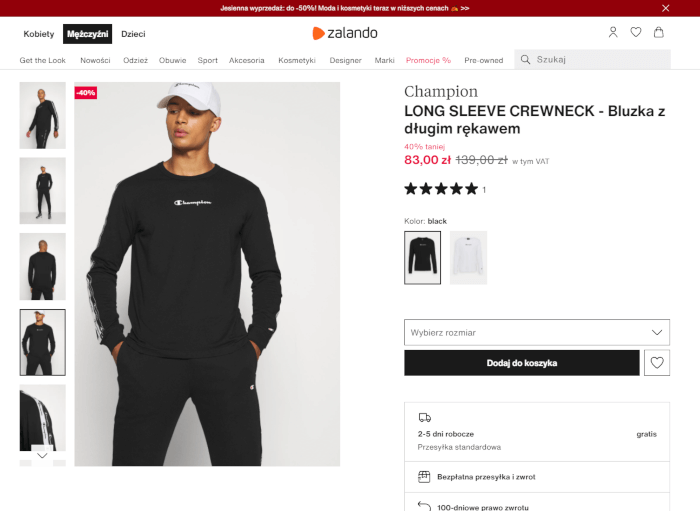
It’s a very common scenario, colors are treated as a normal, individual product. If you hover over the second variant, you will see totally different URL address.
GrandNode allows you to create a similar scenario out of the box.
The same scenario has been implemented in Skechers.com.tr.

Examples of successful online clothing stores
The following GrandNode online clothing stores made a success in eCommerce in different ways.
Skechers
LivoniSocks
Ruck & Maul
Woody
Home Store
Sindal


